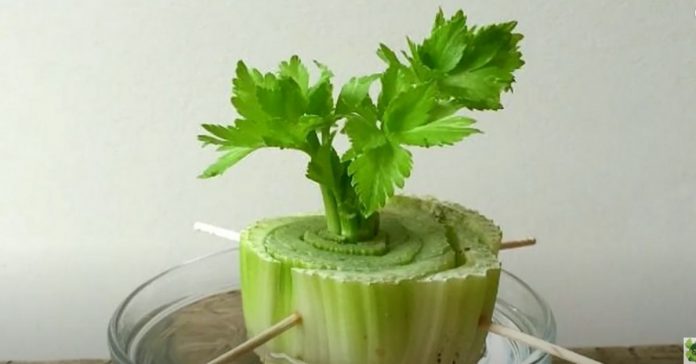One of the advantages of kitchen waste is that it does not have to be thrown in the garbage bin, placed in the garbage disposal or added to the compost pile. Many people are unaware of this, but many remain can be “re-grown” into new plants with just a little time and basic supplies for gardening/growth.
So take a look at some of the most commonly grown plants that can be started from waste. Next time, you may not be so quick to get rid of it!
Green onions are presumably probably the simplest plant to recover from waste and one that is repulsed frequently in the kitchen of the house. Cut the last inch of the onion and spot the bulb in a limited quantity of water. Change the water each day, you should see new development start in a couple of days. Leave the plants in the water to develop or plant them. in the dirt when the gives to achieve a couple of centimeters long.
To regrow celery, remove the celery root and spot in a dish or bowl with cool water, being mindful so as not to dive totally. Place in a warm, radiant window ledge and trust that new development will show up. After the presence of sprouts, it is judicious to plant celery in a fertilized soil covering everything except the new leaves. When the stems are pushed back, evacuate what you have to cook, leaving the roots in the dirt.
Very similar to celery, romaine lettuce is easy to regrow. Take the core down and place it in a container filled with water covering the base of the heart. You can start eating new leaves as soon as they appear or move the plant into a jar or a sunny garden. Remove the outer leaves leaving the leaves deepest so that the plant continues to grow.
Once your potatoes have started to sprout in the pantry, there’s no need to pitch them. They’re right where you want them if you’d like to try growing your own! Cut them into 2-3″ pieces making sure there are a couple eyes on each piece. Allow them to sit out and dry for a few days and then plant into containers or the garden. Rodale’s Organic Life talks about 7 different ways you can plant potatoes.
Once your potatoes have sprouted in the pantry, you do not need to plant them. They are exactly where you want them if you want to try to cultivate yours! Cut them into 2 or 3 “pieces, making sure each piece has an eye on each piece, let them sit and dry for a few days, and then plant them in containers or in the garden. presents 7 different ways to plant potatoes.
Numerous people purchase tomato plants when planting their plant enclosures in the spring, yet tomatoes are very simple to develop from seed. Cut a ready tomato – or even a bit excessively ready – into cuts around 1/4 “thick and put the chop side down on a topsoil of crisp fertilized soil, daintily spread with soil and trust that the seeds will develop. At the point when the seedlings become huge enough, transplant them into compartments in the nursery Homestead Life offers an awesome, well ordered instructional exercise on developing tomatoes from cuts.
Starting with organic garlic, remove some of the larger pods from a head and place them in the soil, the root ends. Straw well to keep the soil moist and prevent it from overheating in the sun. When the bulb sends “scapes”, be sure to remove them so that the plant focuses on sending its resources to the bulb and not to the foliage to make it bloom.










